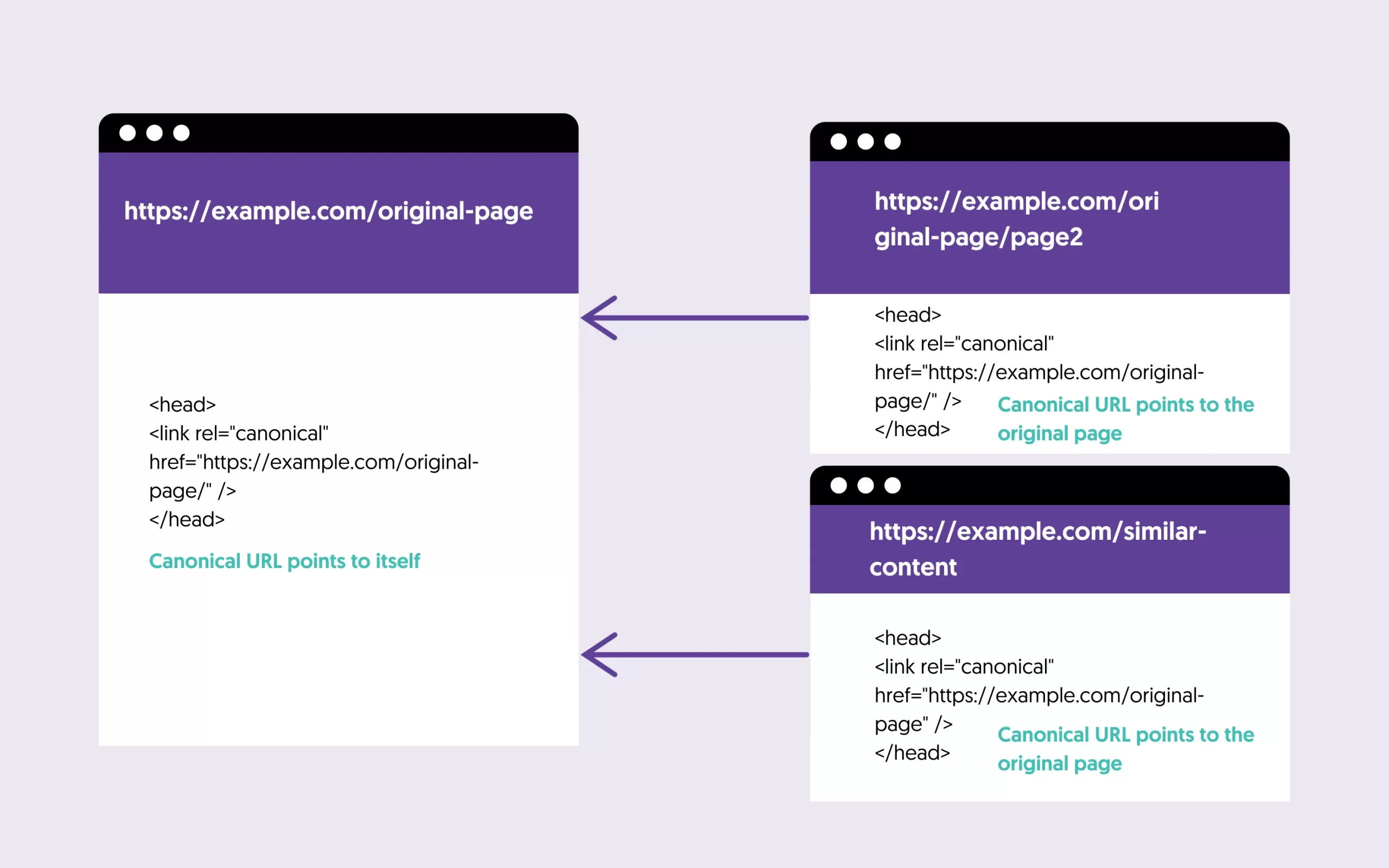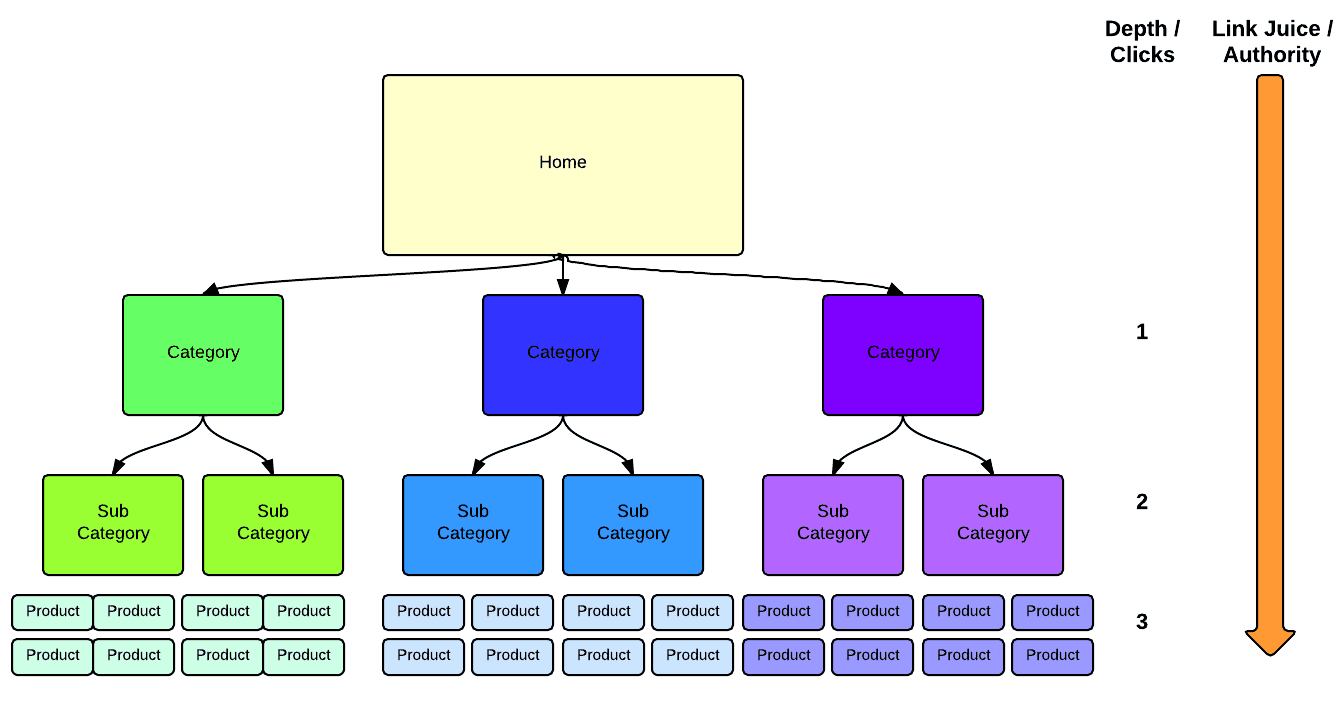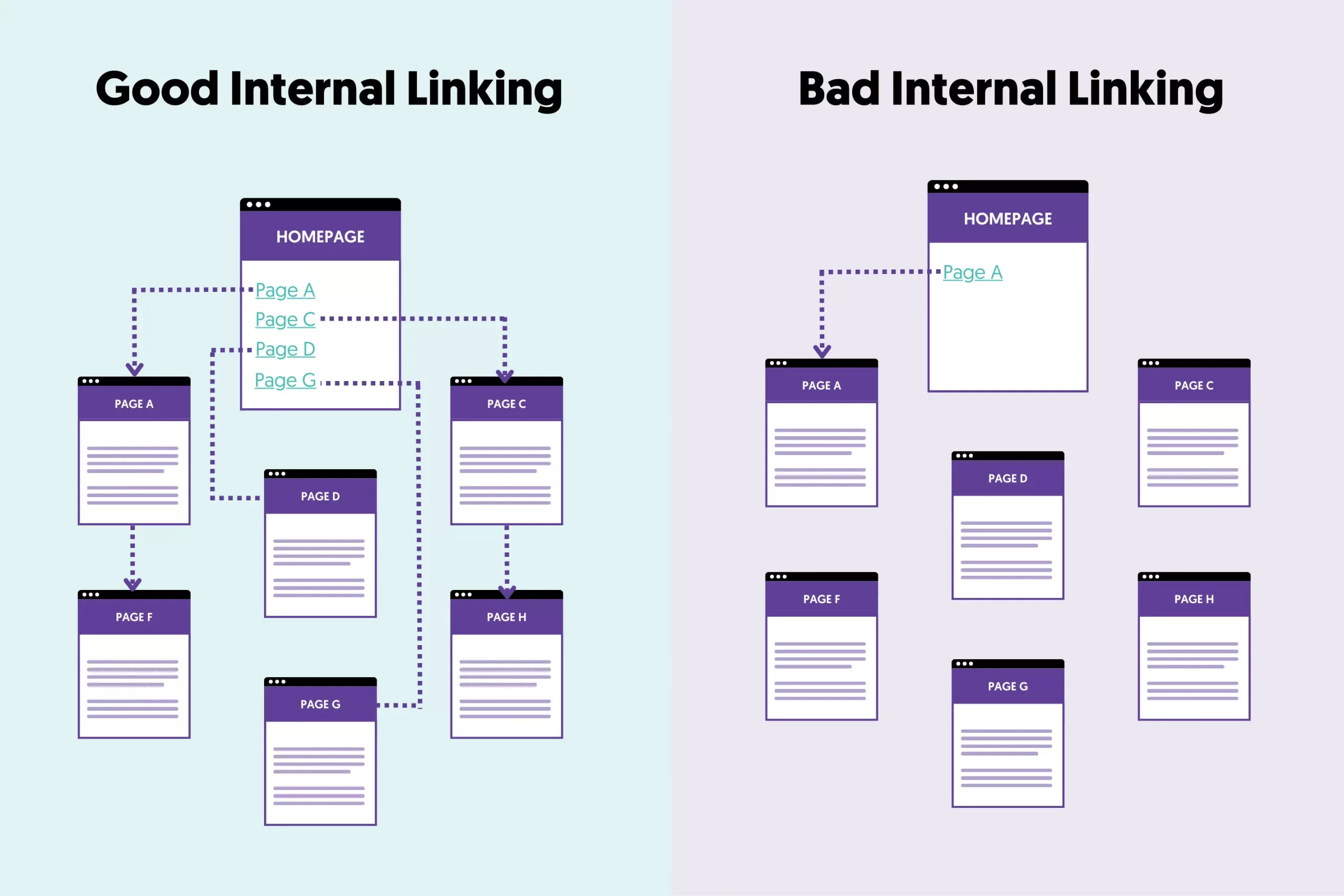You often hear the term “SEO-friendly web design” or “SEO-friendly website,” but what does this mean, and why do you need one?
I will try to answer these questions in this post without using technical terms or advanced SEO practices and theories.
What Is An SEO-Friendly Website?
An SEO-friendly website makes it easy for search engines to crawl and understand the structure and content. This helps the website rank higher in search engine results pages (SERPs) and increases its visibility to users searching for relevant topics.
The most important characteristics of an SEO-friendly website are:
- Crawlability & Indexability
- Mobile-Friendliness
- Fast Loading Speed
- SEO-Optimized Content & Structure
- Secure & User-Friendly Experience
How To Make An SEO-Friendly Website
Follow these tips to make your website SEO-Friendly:
1. Check That Search Engines Can Access Your Content
Robots.txt is a file in your website's root directory that gives search engines instructions on which pages of a website they can index.
Any false blockings in your robots.txt file can be disastrous, so the first thing to do is to check and optimize your robots.txt.
2. Add Your Website To Google Search Console And Check For Errors
The next step is to check for crawl errors. Google has a tool for website owners known as Google Search Console, which, among other things, can give you information about crawl errors.
Step 1: Add the verify your website with Google Search Console.
Step 2: Find and Fix any crawl errors.
3. Make Your URLs Discoverable Using An XML Sitemap
An XML sitemap lists all important pages of a website that search engines need to know about.
It’s normal for a website to have many pages, but not all are useful to search engines. You can create and submit an XML sitemap via the Google Search Console to make their job easier.
Sitemaps are used for discovery purposes and a great way to inform search engines about updates in your site structure or content.
You can read this guide, which provides step-by-step instructions on how to optimize your XML sitemap.
4. Specify Canonical Tags For All Pages
A canonical URL tells search engine crawlers which version of a page they should index.
For example, if you have different pages for desktop and mobile with the same content, you need to tell Google that these pages are the same.
If you don’t do it, Google will only index one of the versions or get confused, which can negatively affect your rankings.

5. Use ALT Text For All Images
Making images accessible to search engines is also a good SEO web design principle.
Images make a page more enjoyable and easier to read, but search engine crawlers cannot easily understand what an image is about.
Optimizing your images will make their job easier and increase your chances of getting traffic from Image searches.
The most important image SEO factor is providing a valid and meaningful ALT Text.

You can read the Image SEO Guide for instructions on optimizing your images for maximum SEO.
6. Leverage Structured Data
Besides images, a website may include other multimedia elements such as videos, podcasts, and audio.
While search engines can index these elements, they need help understanding their context.
This is one way schemas and structured data can help. Structured data are special tags you can add to your HTML code to give search engines more information about certain page elements.
I strongly recommend reading this guide: What is Schema? for more information on using structured data to make your websites easier for bots to read.
7. Optimize Your Site Structure
Having a simple and well-organized site structure is vital for good web design.
Search engines work by crawling a website's homepage and following any links from there to discover and index more pages.
For best practices, any page on your website should be accessible from the homepage in three clicks or less.
It’s always best to organize your website hierarchically. Your hierarchy should be no more than 2 or 3 levels deep.

As you can see in the example above, you can access any page from the homepage with two clicks.
It is highly recommended that a breadcrumb menu allow users to return to the previous level and eventually to the homepage.
You can scroll up to my breadcrumb menu, then return to LEVEL 1 (category page) and the homepage.
For more practical tips on optimizing your site structure, read this guide: Best website structure for SEO.
8. Set Up an SEO-friendly URL Structure
A good URL structure should match and support the website structure.
By URL structure we mean the format of your permalinks (also known as slugs).
An SEO friendly URL structure has the following characteristics:
- URLs are short and informative, i.e. reliablesoft.net/become-an-seo-expert
- It includes SEO keywords in the URL (see the URL of this post as an example)
- It does not include dates in the URL
- It points directly to the page,e i.e. reliablesoft.net/seo-career, unless a page is part of a folder,r i.e. reliablesoft.net/courses/seo
9. Improve Internal Linking
Good SEO practices indicate that the pages of a webpage should be interlinked together to form a small web.

There are several reasons as to why this makes a website SEO Friendlier:
- It helps the crawling and indexing phase
- It enables you to build topic relevancy
- It enables you to direct traffic to the most important pages of your website.
- It’s a great way to make your SEO stronger.
How to improve your internal link structure?
Make sure that all your important pages are linked to from the homepage.
Make sure that all your important pages are linked to from other pages of your website. You can view the internal links report in Google Search Console and make the necessary adjustments.
For more information, read: Internal linking best practices for SEO.
10. Create Unique Titles and Meta Tags
Optimizing your page titles is perhaps the single most important SEO factor.
A well-optimized title helps both search engines and users understand what the page is about and this translates to more clicks to your page and higher rankings.
Work on your headings
A good visual design splits a page into several ‘virtual’ sections. This is especially useful for long pages with lots of information (text, images or videos).
Each section should have its own optimized heading. This makes a page easier to read for both search crawlers and users.
Technically, a page should have one H1 Tag (for the main title), several H2 tags for the heading sections, and H3 tags for subsections.

11. Get Your Website Speed to 2.5 Seconds
Both Google and users want websites that load fast.
What do we mean by fast websites? A website that loads in less than 2.5 seconds on mobile using a mobile data connection.
If you have tried to improve your website's loading speed, you know it’s very hard to get it down to 2.5 seconds. Nevertheless, you should aim to make your website as fast as possible.
It’s a technical subject and you will need the help of an experienced developer or web designer, but it is certainly worth the effort.
12. Check Mobile-Friendliness
Did you know 60% of Google searches are performed on mobile devices? What does this number tell you?
You should follow a ‘mobile-first’ approach when designing your website.
Instead of designing your website for desktop and then optimizing it for mobile, you should do it the other way around.
It’s not easy—you need to find really good web designers who can do this—but it will certainly improve your users' experience.
13. Implement SSL for Website Security
Website security is not a design factor but it’s a big user experience factor.
Your website must be secured (HTTPS) and protect user information as best as possible.
Where applicable, you should also prove to users that the website is secure by showing logos or other relevant information.
14. Improve Dwell Time
When users like a webpage, it means that they spend time on it, reading the content, interacting with the site, and visiting more pages before they exit.
If that’s not the case, then there is probably something wrong with your website, and you need to find out what is wrong and fix it.
Creating an optimized website is not a set it and forget it task. It’s an ongoing process that needs constant analysis and testing.
But, you should not start changing what you ‘think’ is better.
Instead, you should make changes based on informed decisions by analyzing the user behavior on your site.
Programs like Google Analytics can help you understand how users behave on your site.
You can view several analytic reports and find out:
- Time users spend on a webpage and site
- The bounce rate of a page, i.e. how many people exit the website without interacting with your content
- Your top landing and exit pages – which pages they visit first and which pages they visit last before they leave
Knowing this information can help you determine which pages need your attention and, most importantly, measure the impact of optimizations you make to your site.
15. Remove Thin Content
Thin content refers to pages with little or no value to users, such as duplicate pages, automatically generated content, or very short articles that don’t provide real insights.
Google’s algorithms prioritize high-quality, useful content, so having too many low-value pages can hurt your rankings.
If your website has thin content pages, consider expanding them more in-depth or removing them altogether. Consolidating similar pages can also improve SEO by reducing duplicate content issues and strengthening the authority of a single, well-optimized page.
16. Create Authentic Content For Users
Authentic content is the foundation of a successful SEO-friendly website.
Google’s E-E-A-T (Experience, Expertise, Authoritativeness, and Trustworthiness) guidelines emphasize that content should be written for users, not for search engines.
This means creating content that addresses real problems, answers common questions, and provides unique perspectives. Instead of relying on AI-generated or keyword-stuffed content, aim to publish content demonstrating your expertise and credibility in your field.
Advantages Of An SEO Friendly Website
Something that most CEOs, small business owners, or new webmasters don’t easily understand is why you need an SEO-friendly website and why you make an effort to make your website friendlier to search engines.
Well, the reasons are a lot, but those you need to know are:
1. Increase in organic traffic (that is, traffic from search engines)
As expected, an SEO-friendly website will get you more traffic from search engines as it will likely run higher in the SERPS (search engine results pages).
If you consider that most people who use the search box tend to select one of the first 5 results, you can understand the importance of SEO.
2. It will make your website user-friendly
SEO is not only for search engines; good SEO is also for users. Applying the principles of SEO to your website will make it easier to use and enhance the user experience.
3. It gives you brand credibility
Users are more likely to trust websites (businesses) found on the first pages of Google, Bing, or Yahoo. This is good for both brand awareness and brand credibility.
4. It is cost-effective
An SEO website will drive targeted traffic 24/7 without spending money on PPC or other forms of online advertising. While reaching that point is costly, the long-term benefits are more significant.
5. It helps you understand what your most important customers want
SEO drives quality traffic, and analyzing the behavior of those users (how they enter your website, what they click, how they leave, what they like, etc.) is a great way to understand what your customers want and adjust your website or products to match their needs.
6. SEO is even more important on mobile
A mobile-friendly website with good rankings on mobile searches can get more customers and traffic than websites that are not mobile SEO-friendly.
More and more users are using their mobile phones to search for information or products while on the go. It is important to be on top of the search results; otherwise, you lose customers to competition, especially those searching for local products or services.
Conclusion
An SEO-friendly website has specific features and characteristics that help search engines understand what the website is all about, increasing the chances of achieving better rankings in the SERPS.
The most important advantage of having an SEO-friendly website is getting more targeted organic traffic from search engines.




